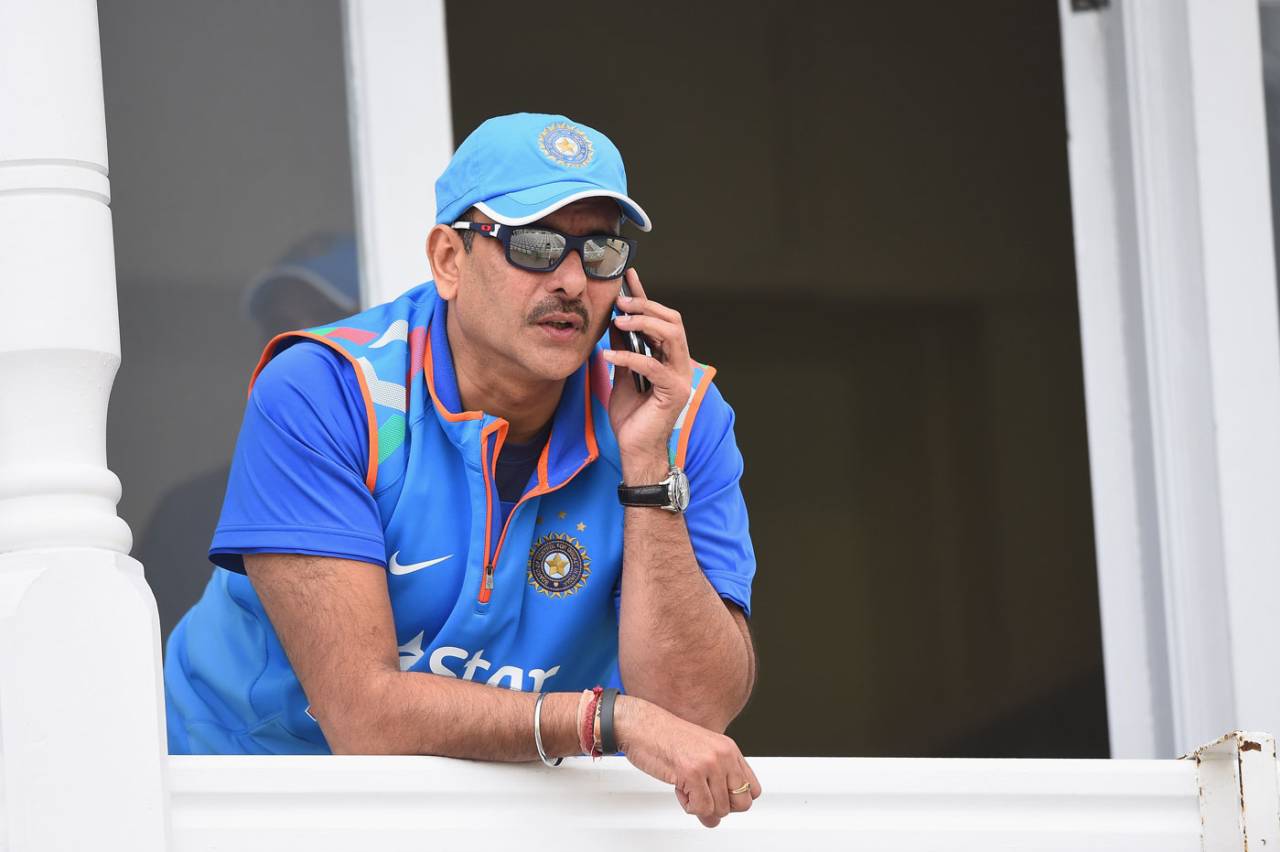India team director
Ravi Shastri has said one-day batting has led to a decline in the art of batting time and grafting for runs, attributes he believed were important on pitches like the ones in Mohali and Nagpur. Shastri felt batsmen on both the Indian and South Africa sides needed to apply themselves, especially as he hoped for a similar kind of surface for the fourth Test in Delhi.
"Nothing wrong with it [pitches produced for the Test series]," Shastri told ESPNcricinfo. "I would hope the one in Delhi is absolutely the same. I have no qualms about it.
"It just goes to show that with the amount of one-day cricket being played, the tendency to graft, the tendency to spend long hours at the crease is diminishing. It's only when you play on tracks like this that you realise that you got to spend time at the crease.
"And when you saw Hashim [Amla] and Faf [du Plessis] batting yesterday, you thought there was nothing in the pitch. It just goes to show there was an era earlier who would play on these pitches and people would get hundreds. Because they were prepared to go through the grind."
Amla had
said, however, South Africa could still have been bowled out for less than 100 in their second innings, and alluded to an element of luck in the second innings where they played and missed often. Shastri's counter-argument was to point to the batsmen's lack of application as the reason for sub-par totals on both sides in the Nagpur Test.
"I think if someone had applied himself he would have got 80-odd, 90-odd, even a hundred," Shastri said. "The way [Murali] Vijay was playing he would have got a hundred.
"[The pitch was] absolutely not [a problem]. It's on both sides. Par for the course on this wicket was 275 or 250, which was more than enough. If you get up and reach there [to the pitch of the ball] and there is a surface like that you can play on it. You have to stop cribbing and get on with the job at hand.
"For example, Bangalore was a fantastic track. I'm disappointed we are not 3-0 up. On a good track we bowled out South Africa and we were 80 for no loss. We really had a chance to dominate the next four days. People won't talk about that."
He also refused to admit that inconsistent bounce from the first day was a reason for the Nagpur pitch coming under scrutiny. "Where was inconsistent bounce? It was fine. It was only later on by the end of the second or the third day when the ball started keeping low. And you tell me which batsman got out to a ball that kept low barring a tailender that Mishra [got] in the second innings? [On du Plessis' dismissal in the second innings] What a shot that was. In those circumstances that shot you avoid."
Shastri said he wasn't worried by the trend of Test matches finishing inside three days, and said it wasn't the case in India alone. "How many wickets went in Adelaide [between Australia and New Zealand] yesterday? 12, no? So?" he said.
"Nothing wrong with that [matches finishing inside three days]. It [Nagpur] was a Test match that was moving all the time. You compare this Test to the Test match in Perth, I would pay money for a ticket for this game, yaar. To hell with the five days. You go and sit for the last two days there."
He endorsed the
views of captain Virat Kohli and R Ashwin who had said India never complained about conditions abroad, while also hitting out at those criticising Indian pitches, which he thought were unfairly targetted.
"When we go overseas we don't have any choices. Why would you complain? I don't see anyone complaining, it's only some of them who have never played the game who are complaining.
"Let them [former Australian cricketers] sit in Australia and talk about their pitches. Tell them not to waste their time about Indian tracks. Come and play here."
Shastri asked how a seaming track, which gradually calmed down in favour of batsmen before breaking up in the end, was superior to one that abraded from day one. "What happened in Nottingham when the game got over in two days? Where did you see breaking up into a nice wicket and fifth day turn? This [Nagpur Test] at least went for more than three days.
"Which rule tells me that a ball can't turn on day one? Where does it tell me in the rulebook it can only swing and seam? Here, at times, I think unless you play on these tracks you won't know how to play on these tracks.
"It's how you adapt and adjust. Sometimes a ball turns on day one but then it flattens out on day two and three. Who says that you should get 400 on a track? I have always believed par for a first-innings score is 300-250."
Arun Venugopal is a senior sub-editor at ESPNcricinfo
